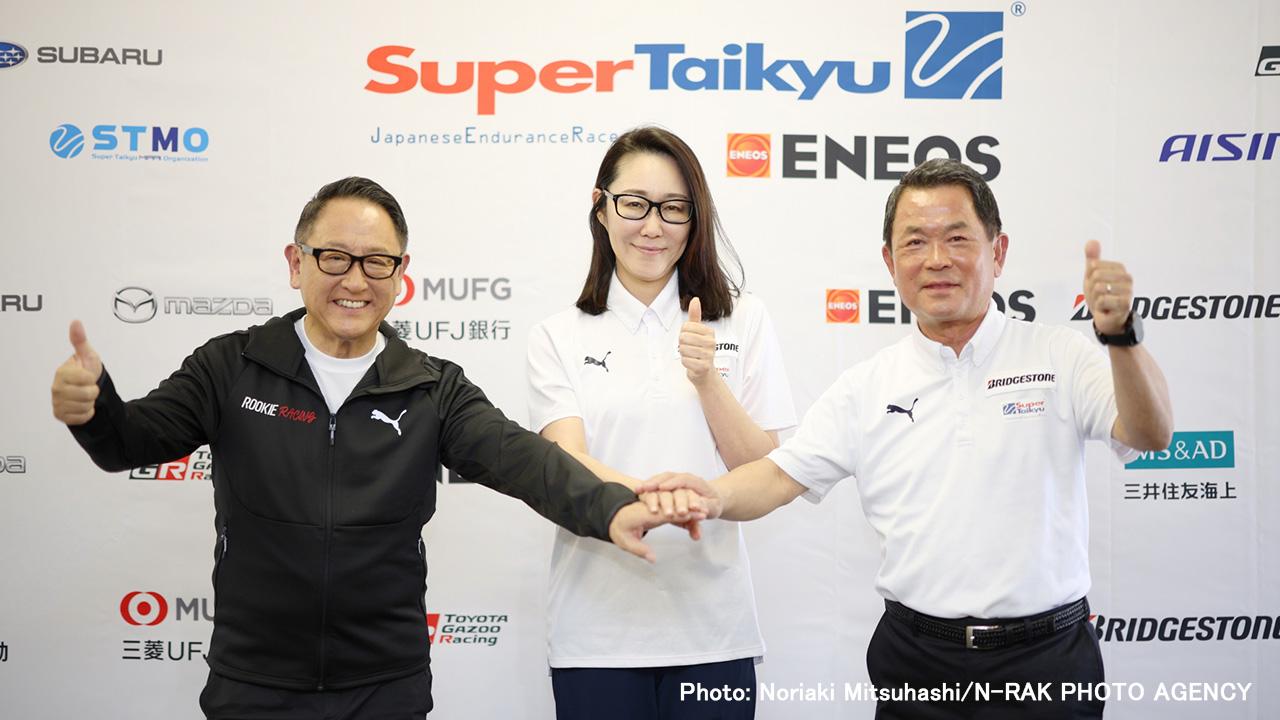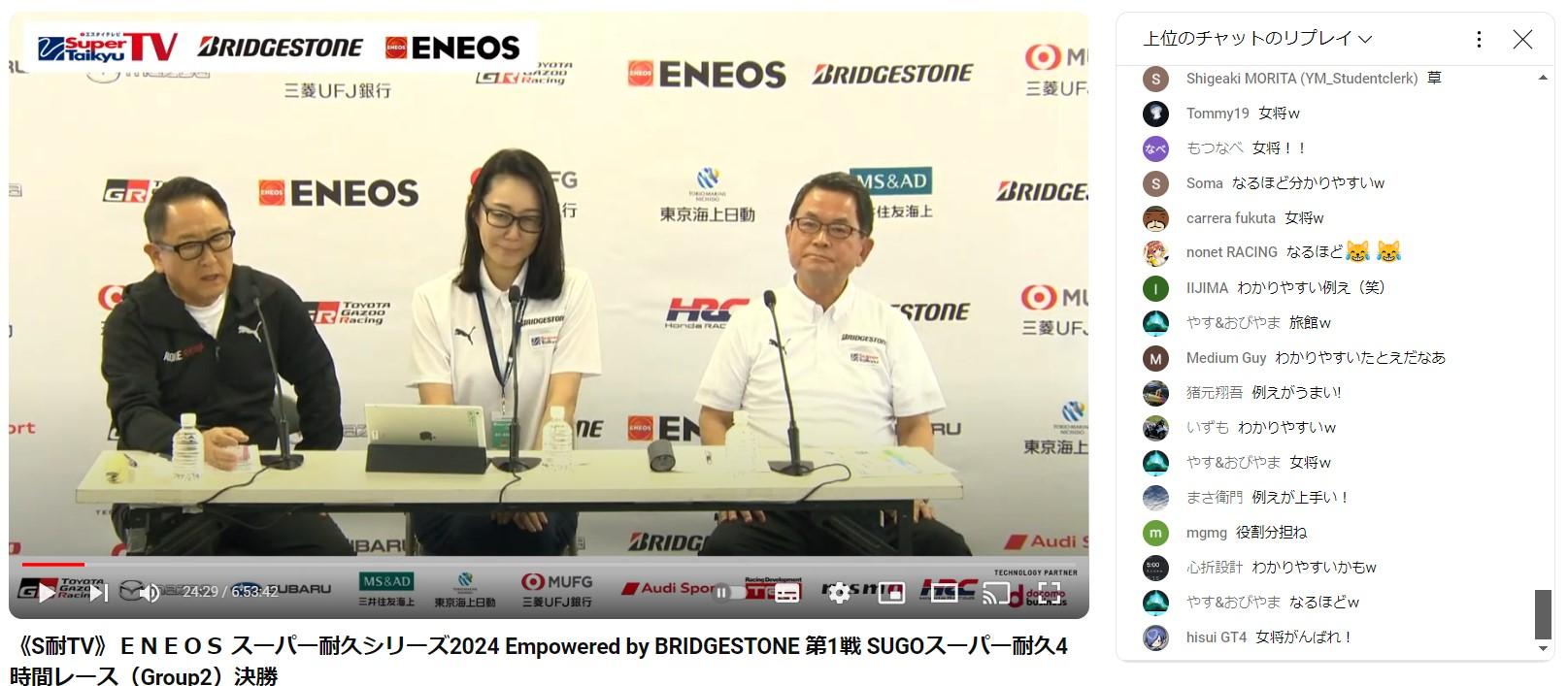
The racing series will be run by the newly launched Super Taikyu Mirai Organization, chaired by none other than Morizo, aka Akio Toyoda. What is the new body's vision for Super Taikyu's future?
Morizo’s involvement in the new organization
——Did you have any reservations about taking on these vast responsibilities while serving as Toyota’s chairman?
The pair’s opening remarks were followed by a Q&A session. Streamed live on the Super Taikyu YouTube channel, one moment in particular lit up the comments section.
Morizo was answering a question about the roles of the chairperson, vice chairperson, and managing director when the responses came flooding in: “Great analogy!” “That’s easy to understand!”

Incoming STMO Chairperson Morizo/Akio Toyoda
The Super Taikyu Organization has successfully fostered the series as an inclusive, cost-sharing racing format. Even so, I also understood the concerns (that Super Taikyu faces).
At the same time, despite stepping down as chairman of JAMA (Japan Automobile Manufacturers Association), I still have various other duties.
When these don’t go as planned, at times I will have to step away from the racetrack.
Because many things happen during events, Kuwayama will be there at the genba as vice chairperson, continuing to provide direction as she has always done. With Kato serving as managing director, the two of them will make various decisions on the ground. I will assume overall responsibility.
If we were running a ryokan, I would be the general manager, Kuwayama the okami (female manager in charge of service), and Kato the duty manager. When staying at any ryokan, you rarely see the general manager around, right? (Laughs)
In reality, our duty manager and okami will handle more tasks than in the past, with me backing them up in various ways.
I do not think these organizational changes will immediately usher in a new future. We hope you will continue to give us your encouragement and follow how Super Taikyu evolves over the long term.
The Super Taikyu story and partner engagement
——What was the impetus behind various manufacturers getting involved with the new organization?
First, Morizo noted how the hydrogen engine’s entry into the competition brought in more like-minded partners seeking to expand carbon-neutral options.
As the topic turned to Super Taikyu’s history, incoming Managing Director Toshiyuki Kato delved even deeper.
Incoming Managing Director Toshiyuki Kato
Looking back to 1991, as the country’s economic bubble burst, Mitsuru Kuwayama launched the series to give Japan a form of racing that was open to amateurs.
After the financial crisis, the number of participating cars had fallen to less than half.
With races greatly impacted by the economy during this difficult period, some events had no more than a dozen or so entrants.
Then, in 2013, Mitsuru Kuwayama passed away, and Harumi rose to the challenge, beginning a second chapter. The past 11 years of racing have been about keeping the series’ inclusive format alive.
History was set in motion when Morizo entered the competition as a driver in 2018.
The snap decision to add the ST-Q class in 2021 brought in the hydrogen-engine development car, followed by Subaru and Mazda cars running on carbon-neutral fuels. Super Taikyu became something of a testing ground for creating new decarbonization options.
In 2022, ENEOS became our naming rights sponsor, greatly boosting Super Taikyu’s presence.
Then, in 2023, a fire at Hankook’s plant sparked a tire supply crisis until Bridgestone stepped in and saved us from being unable to race.
Even amid these circumstances, the number of participating cars grew; in fact, more than half the teams changed over during the pandemic. The series has transformed into a sustainable competition.
The participants have also worked hard, fostering a relationship of mutual respect between manufacturers and privateers.
Overseeing the beginnings of this “run-up to the future,” Kuwayama decided that this future was best entrusted to Morizo and his peers, and that brings us to today.

